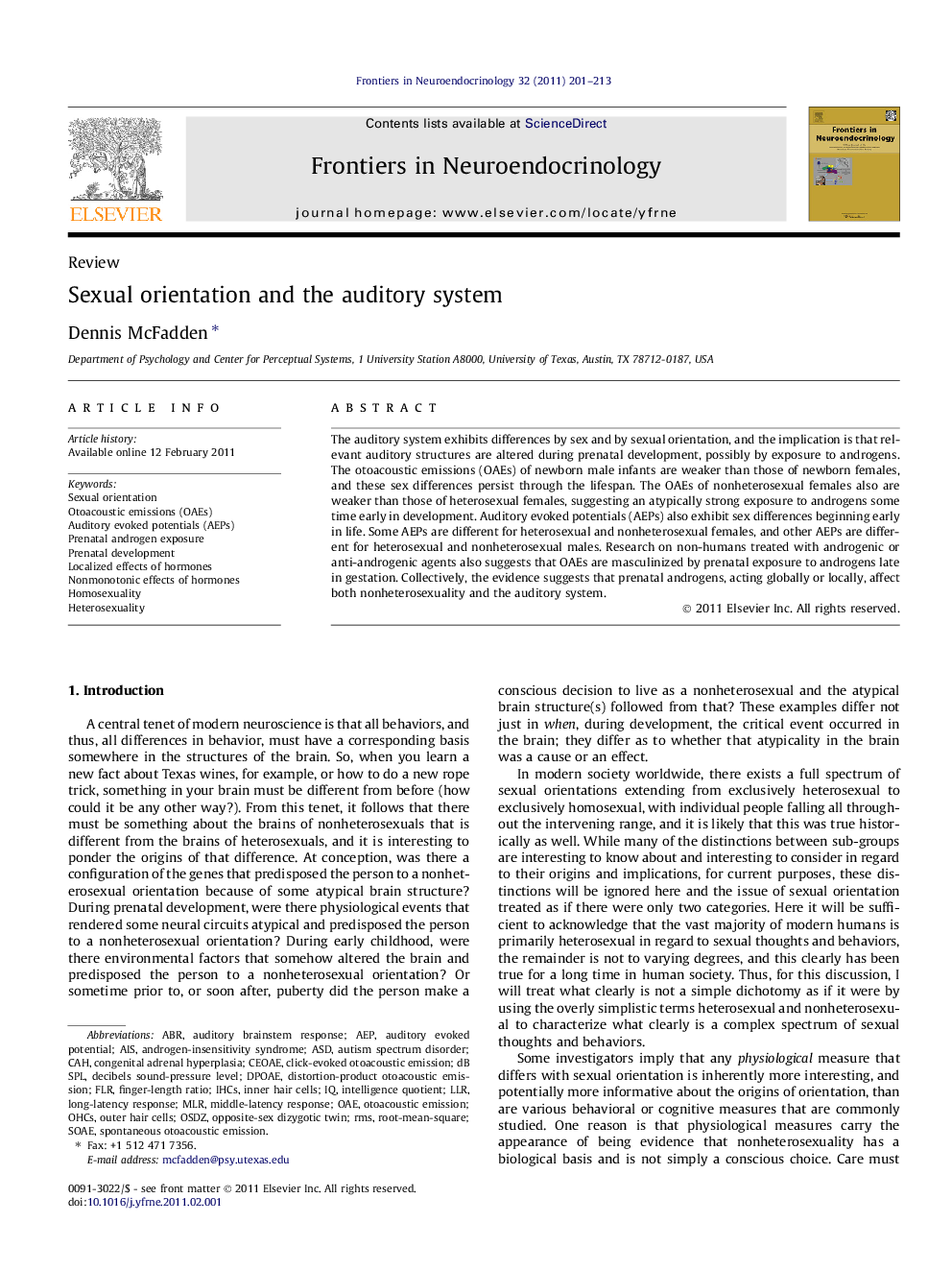| Article ID | Journal | Published Year | Pages | File Type |
|---|---|---|---|---|
| 2799401 | Frontiers in Neuroendocrinology | 2011 | 13 Pages |
The auditory system exhibits differences by sex and by sexual orientation, and the implication is that relevant auditory structures are altered during prenatal development, possibly by exposure to androgens. The otoacoustic emissions (OAEs) of newborn male infants are weaker than those of newborn females, and these sex differences persist through the lifespan. The OAEs of nonheterosexual females also are weaker than those of heterosexual females, suggesting an atypically strong exposure to androgens some time early in development. Auditory evoked potentials (AEPs) also exhibit sex differences beginning early in life. Some AEPs are different for heterosexual and nonheterosexual females, and other AEPs are different for heterosexual and nonheterosexual males. Research on non-humans treated with androgenic or anti-androgenic agents also suggests that OAEs are masculinized by prenatal exposure to androgens late in gestation. Collectively, the evidence suggests that prenatal androgens, acting globally or locally, affect both nonheterosexuality and the auditory system.
Research highlights► Otoacoustic emissions (OAEs) and auditory evoked potentials (AEPs) are described. ► Both OAEs and AEPs exhibit differences depending upon sex and sexual orientation. ► Prenatal androgens appear to weaken the cochlear amplifiers. ► Prenatal hormone levels apparently can contribute to determining sexual orientation. ► There may be localized and nonmonotonic effects of prenatal androgen exposure.
